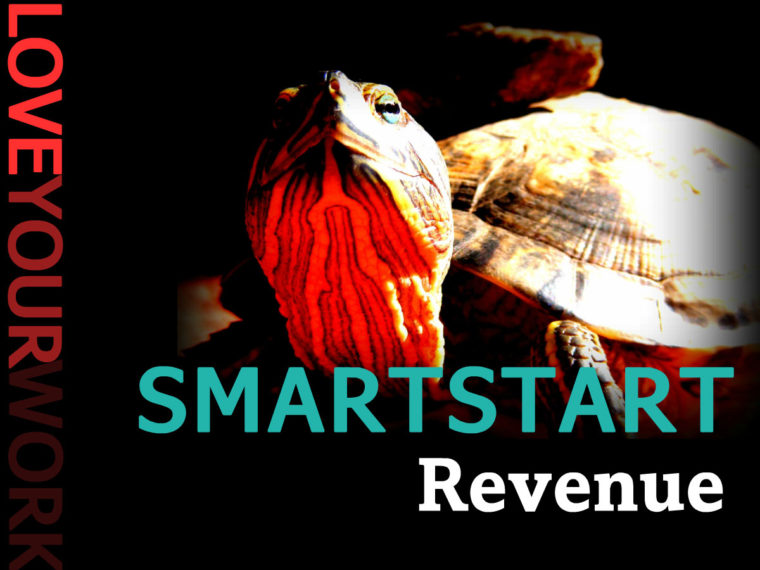
A simple truth — Without revenue, your business has no future.
Owning your own business is a stressful undertaking on so many levels. Even more so when you’re dealing with revenue-related stress. A situation made far worse when you have people depending on you for a livelihood with which to support themselves and their families.
It’s a well-known fact stress can kill you. Not just your business. You.
Therefore, you must learn how to recognize and manage all stress effectively for your own sake. And, when you own your own business, this means being able to manage five types of revenue-related stress:
- no revenue
- late revenue
- not enough revenue
- interrupted revenue
- too much revenue
For most of us, revenue pressure comes with the territory. We expect it. Maybe even embrace it.
But keeping ourselves under excessive pressure by allowing unrelenting stress to continue, regardless of origin or nature, is unhealthy and irresponsible.
Let’s explore the common scenarios you’ll encounter in your business and what you can/should do about them.
1: No revenue
When you are just starting out, you will need to give yourself time to begin generating revenue. How much time you can afford varies from person to person. Be sure you know how long you can survive without any money coming into your business by planning ahead for it.
How you fund the window of opportunity also varies by individual. We all have different comfort levels when it comes to risk and debt. If you have a significant other or children in your life, this funding decision isn’t going to be all about you. Put a time limit on the acceptable period of no revenue that all can agree to, then uphold your commitment.
Once you clear the start-up challenge, you may also find there are times of the year when you’ll have no revenue. Seasonal businesses, for example, face this situation year after year. Plan ahead for dead periods by keeping some cash in reserve and have a backup plan for how you’ll keep things going until revenue returns.
In your first year, of course, you’ll be guessing as to when and how long these periods will be. Charting your revenue history though reveals reasonably predictable patterns in cashflow that you can and must plan for.
The third scenario which results in no revenue is revenue that becomes uncollectable. Bad debt is just another aspect of doing business you must plan for. It can arise in many ways: from credit card and refund fraud, to outright theft, and all the way to the joint venture or affiliate partner who claims there were no sales for which any payment is due. You will learn from these bad experiences but to believe they will never happen to you is naive.
2: Late revenue
There are two forms of late revenue that can create stress for you. The first is the revenue you expected to start arriving in x months that then takes y months to achieve, if you are able to achieve it at all. Stay out of this trap by doubling or even tripling your estimate as to how long it will take for the money to start coming in until you have real experience and hard data to back up your estimates.
The second form of late revenue is that which you’ve earned but haven’t yet been able to collect from the customer or withdraw from your merchant account for whatever reason.
Until the money is in your bank account and accessible, it does not exist. There are too many stories of businesses who had successful product launches only to see their merchant accounts frozen or large sums withheld leaving them unable to cover the expenses of the launch or service their customers. Always know your cycle time for cash movement from sale to bank deposit.
3: Not enough revenue
It’s common to be overly optimistic not just about how quickly your target market will buy what you’re selling but also how much they’ll spend and how frequently they will purchase.
Yes, you can use industry average conversion rates to help you create revenue forecasts but actual numbers, based on your history, are more reliable. At start-up, revenue forecasts should be based on conservative ranges, after which you can use these rates as benchmarks for your revenue performance.
(Keep in mind, when someone is trying to sell you on purchasing their product as the must-have solution to creating fantastic revenue incredibly fast, they are not telling you the whole story. You are better off ignoring such testimonials. That’s why they have those fine print disclaimers at the bottom of the salesletter. Results not typical indeed!)
It could also be that you just don’t have enough new opportunities in play or enough leads entering your sales funnel to move through the processes that result in revenue. If this is your problem, you’ll focus first on building your pipeline. Then, if you still don’t have enough revenue coming in, work on optimizing your conversions.
By the way, getting people onto your email list is not conversion. What you have are only prospects you can nurture and grow. It isn’t conversion until it hits your bank account (and subsequently your Profit and Loss (P&L) statement).
Another situation that creates insufficient revenue is overspending to get sales in the first place. If your expenses exceed what you can potentially achieve in revenue you’ll find yourself in a bad situation as well. Because now you’ll have debt on top of not having anything left over for yourself despite doing all the work to make the sale.
You’ll suffer from this stress exponentially if you’re consistently not coming close to hitting your revenue targets, are having persistent cashflow problems and/or find yourself getting into bad business deals just because you have to have something coming in to keep up with financial obligations.
4: Interrupted revenue
Particularly with an online business you can find yourself dealing with this stress for a variety of reasons, some of which are your own fault. For example, if you run your business on platforms or using key services you don’t control, you may wake up to find they have disappeared overnight taking all your data with them. Sometimes you do get notice a service or application you rely on is going to be shut down but often you don’t. If you haven’t put a Plan B in place, you’ll be scrambling. Techno-hell is not a place conducive to generating revenue.
I’m not saying you should never use third-party applications or services, just that you must always be aware they could taken away from you at any time. You need to know in advance what you will do if that happens. You might even need to build some redundancies into your systems and processes to ensure you’ve covered yourself from data and revenue loss should such a situation occur.
So that’s one situation that creates interrupted revenue and, for the most part, there are things you can do to control, or at least limit, your risk of loss. Then there are situations you can’t control or predict such as unexpected illness, accidents, and random acts of God (the recent flooding in Texas comes to mind).
Maintaining a cash reserve, paying for insurance, and doing everything you can to protect your health are all strategies you can use to mitigate revenue losses arising from such interruptive situations but you can’t rely on them indefinitely. Cash reserves are not infinite, insurers think nothing of not honouring contractual obligations, and even the well fed, well-exercised and well-rested get cancer (or, as in my case, suffer a life-changing brain injury after a near fatal head-on collision caused by an impaired driver).
5: Too much revenue
Is it possible to have too much revenue? And would that be stressful?
Yes and absolutely!
When you suddenly have too much coming in and find yourself not having prepared appropriately for high-volume sales, you may not be able to handle the growth and extra demands placed on you and your business. Then there is the matter of planning ahead for the tax burden excessive revenue creates.
However, there is another stress that arises from having too much revenue that is equally destructive. That is, going crazy with spending because you’ve fallen under the spell of believing it’s going to be like this all the time and forever. Not so.
It’s as important to practice safe revenue management when you have a lot as it is when you have none or very little.
With time you’ll become intimately familiar with your revenue potential and reality and, hopefully, your actions, marketing, and spending will be in tune with it. Revenue is about energy flow and stress management as much as it is about running your numbers.
The key to managing revenue-related stress is to create processes and systems that serve your long-term interests and to avoid allowing yourself to become overly reliant on others in pursuing your revenue goals. Manage the risks that are under your control and hedge your bets with those that aren’t. Then simply go with the flow!
More next time. Until then, remember to LOVE YOUR WORK, whatever it may be.
PS Did this post speak to you? If so, please feel free to share it with your own communities, friends and followers. Thanks for sharing the love! ♥♥♥



